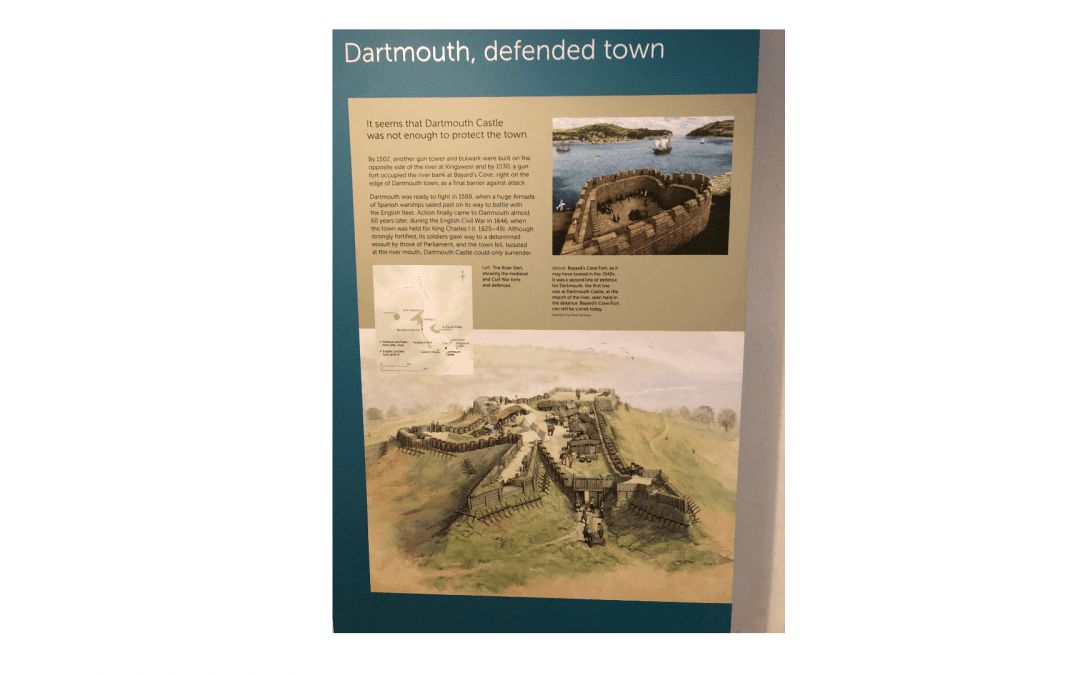We’re in Dartmouth for the Royal Regatta. We took a stroll down to Dartmouth Castle today, to get a view of the racing. It was an overcast day, with the cloud base obscuring the trees on the valley side. we did see some racing, but the visibility wasn’t great. A recent post was about connections between my past life of civil engineering, and my new life writing historical fiction. Despite the weather, or perhaps because of it, I found some interesting things to write about, I hope.
On the way to Dartmouth Castle I saw a plaque commemorating George Parker Bidder. He lived in a house just outside Dartmouth from 1860 to 1878. His stonemason father put him on stage as a child performing incredible feats of calculation. Later he became a civil engineer. He assisted George Stephenson in building the London and Birmingham Railway. He was a pioneer of the electric telegraph, and designed London Victoria Docks, amongst many other fine works.
In the castle there was an information board describing the castle’s role in defending England from the Spanish Armada. It was interesting to reflect on my 10th great-granduncle, Sir Anthony Standen’s role in defence against the Spanish Armada. Sir Anthony was Francis Walsingham’s spy feeding him detailed intelligence on the preparation of the Armada.
There was another information board about Christopher Blackoller. In 1700 he was the collector of customs in Dartmouth. The government provided him with a fast sloop to stem the rising tide of smuggled goods – tubs of french brandy, wine, tea, and tobacco, that were flooding into Dartmouth. But rather than using his new, fast boat to stop the smuggling, he used it to smuggle himself. Well you can’t say he wasn’t enterprising. I might like to use his story at some point. It’ll probably take me another thirty books to get there, but civil engineering involves a great deal of planning ahead.

